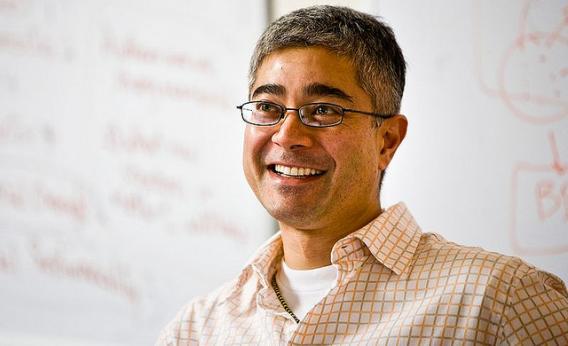Most efforts to capitalize on the rapid rise of mobile platforms often focus on smartphone experiences in first-world markets. But the safe bet for your average Western tech goliath ignores where mobile development matters the most: the developing world, where phones are cheap, basic, and a valuable source of communication for millions of people for millions of people.
The John S. and James L. Knight Foundation hopes to help change this. Last week, the foundation awarded a total of $2.4 million in funding to eight mobile ventures dedicated to informing and engaging communities. Many of the winners of the Knight News Challenge: Mobile shared the common focus of aiding communities in developing nations through mobile innovations.
On Friday, at the Walter Cronkite School of Journalism and Mass Communication at Arizona State University, the challenge winners presented their projects before an audience of their peers. (Disclosure: Arizona State is a partner with Slate and the New America Foundation in Future Tense.)
Some of the most interesting projects focused on community building through fostering education and public advocacy. For instance, Wikimedia’s entry aims to increase the developing world’s access to Wikipedia’s wealth of information. “Knowledge is power. Education is the most important way to get people out of poverty,” said Kul Takanao Wadhwa, head of mobile and business development at Wikimedia. In his presentation, Wadhwa explained that this initiative intends to increase the number of languages in which Wikipedia is available, improve the user experience of the service on basic feature phones, work with cellphone companies to lower costs involved with accessing Wikipedia.
Also utilizing the power of easy information-sharing, RootIO is an open-source toolkit that allows for the easy creation of a small-area radio station with only a cheap smartphone and transmitter. In areas where radio is still a primary source of information, this can encourage both community engagement and education.
Other winners, including Abayima and WITNESS, created tools that aid in the protection of human rights and encourage public advocacy.
Abayima’s Open SIM Kit was developed as last-line of defense against open-communication suppression. This open-source app makes it easier to store and discretely transfer data through your phone’s SIM card. Normally, SIM cards store only basic information, such as address books and network authentication data. Abayima’s App allows users to directly modify the contents of SIM cards by creating and 200 kilobytes’ worth of text and images. Once on the card, these data can be viewed on any other device the SIM is inserted into, making transferring easy and discreet.
Currently in alpha, this project is designed for use in emergency situations, such natural disasters or government suppression, when open-communication methods have failed or discretion is required. Open SIM Kit is optimized for use on basic feature phones, the more popular choice for developing communities.
The challenge’s most impressive human rights-related project is WITNESS’s open-source InformaCam app. Created in collaboration with the Guardian Project, a development studio specializing in mobile security, the app is intended to aid citizens in documenting human rights violations.
Citizen-generated footage is already commonplace online. Graphic videos depicting the Syrian conflict are shot on camera phones and uploaded to YouTube daily. However, it is difficult, if not impossible, to verify information about these videos and photos, such as when and where they were taken and whether the recording has been altered. Thus, their journalistic and legal use is limited. InformaCam remedies this issue by attaching valuable metadata to media files immediately upon recording, thus shedding light on the circumstances in which a video was taken.
The Android app uses a smartphone’s internal sensors to verify GPS coordinates, the altitude, the timestamp, and so on. From there, a user can tag or obscure faces in the photo or video and also list contact info. Hashed and encrypted into the file itself, the metadata can’t be altered or tampered with. From there, the file is automatically uploaded to a secure destination of the user’s choice via a TOR service.
Initiatives like those honored at the Knight Media Challenge remind us of that the importance of cellphone goes beyond developing the next best-selling app.
